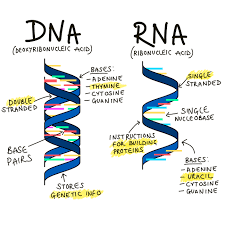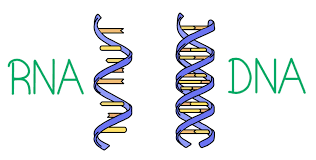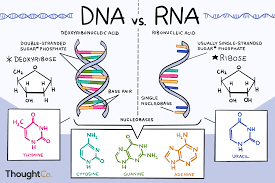DNA (Deoxyribonucleic Acid) is double-stranded, while RNA (Ribonucleic Acid) is single-stranded. DNA is located in the nucleus of the cell and serves the vital function of storing genetic information passed from parents to offspring.
RNA plays various roles, which will be discussed in this article. There are fundamental differences between DNA and RNA that are crucial to understand.
Read Also: Common Rabbit Diseases and How to Cure them
Overview of DNA and RNA: Key Differences and Roles in Genetic Information

DNA and RNA are the two most common nucleic acids in cells. DNA primarily stores genetic information, serving as a blueprint for the construction of proteins and RNA molecules. It carries genetic instructions through genes, while other DNA sequences serve structural purposes or regulate genetic expression.
RNA, on the other hand, is commonly known as the intermediary between DNA and the cell’s protein synthesis machinery, acting as a template for protein synthesis. The four bases found in DNA—adenine (A), cytosine (C), guanine (G), and thymine (T)—are crucial in its function.
A DNA molecule consists of two strands wound around each other, held together by bonds between complementary bases: adenine pairs with thymine, and cytosine pairs with guanine. This sequence of bases in a gene carries the necessary instructions for protein assembly.
RNA is also a nucleic acid, composed of nucleotide chains that convey genetic information, and it plays an essential role in protein synthesis. A nucleotide consists of a nitrogen-containing base, a five-carbon sugar (pentose), and phosphate groups.
The nitrogenous bases are typically derivatives of purines (adenine and guanine) or pyrimidines (cytosine, thymine, or uracil in RNA).
Types of RNA Molecules in Agricultural Genetics
There are three main types of RNA involved in protein synthesis:
1. Messenger RNA (mRNA): mRNA acts as the template for protein synthesis, carrying genetic information from DNA to the ribosome.
2. Transfer RNA (tRNA): tRNA is responsible for transferring specific amino acids to the growing polypeptide chain during protein synthesis. It ensures the correct amino acid is matched with the corresponding three-nucleotide codon on the mRNA molecule.
3. Ribosomal RNA (rRNA): rRNA, which makes up about 80% of the RNA in a typical eukaryotic cell, forms part of the ribosome’s structural and catalytic components, assisting in protein synthesis.
Read Also: Importance of Rabbit Urine and How to Use it
Key Differences Between RNA and DNA: Structural Variations and Functional Roles

DNA and RNA differ in three primary ways, as illustrated in Figure 9:
1. Double-Stranded vs. Single-Stranded: Unlike DNA, which is double-stranded, RNA is usually single-stranded in its biological roles and has a shorter nucleotide chain.
2. Sugar Composition: DNA contains deoxyribose, whereas RNA contains ribose. The absence of a hydroxyl group at the 2′ position of DNA’s sugar makes it more stable than RNA, which has two hydroxyl groups and is more prone to hydrolysis.
3. Base Pairing: In DNA, adenine pairs with thymine, while in RNA, adenine pairs with uracil instead of thymine.
Synthesis of RNA: Enzymatic Catalysis in Protein Synthesis
RNA synthesis is catalyzed by the enzyme RNA polymerase, which uses DNA as a template. The synthesis process begins with RNA polymerase binding to a promoter sequence on the DNA.
The DNA double helix is unwound by helicase, and RNA polymerase progresses along the DNA template strand in a 3’ > 5’ direction, synthesizing a complementary RNA molecule in the 5’ > 3’ direction. The sequence of the DNA also determines where RNA synthesis will terminate.
RNA-dependent RNA polymerases, which use RNA as their template, are also found in certain RNA viruses (such as poliovirus) and play a role in RNA interference in many organisms.
In this article, it has been established that DNA is deoxyribonucleic acid, a double-stranded molecule, while RNA is ribonucleic acid, which is single-stranded. DNA serves as the blueprint for storing genetic information in the cell, and RNA plays a critical role in protein synthesis.
The four bases found in DNA and RNA differ, and these differences are essential in determining the structural and functional roles each molecule plays in cellular processes. Understanding these processes is crucial in the field of agricultural biotechnology, where the manipulation of genetic material can lead to improved crop varieties and enhanced productivity.
Do you have any questions, suggestions, or contributions? If so, please feel free to use the comment box below to share your thoughts. We also encourage you to kindly share this information with others who might benefit from it. Since we can’t reach everyone at once, we truly appreciate your help in spreading the word. Thank you so much for your support and for sharing!

